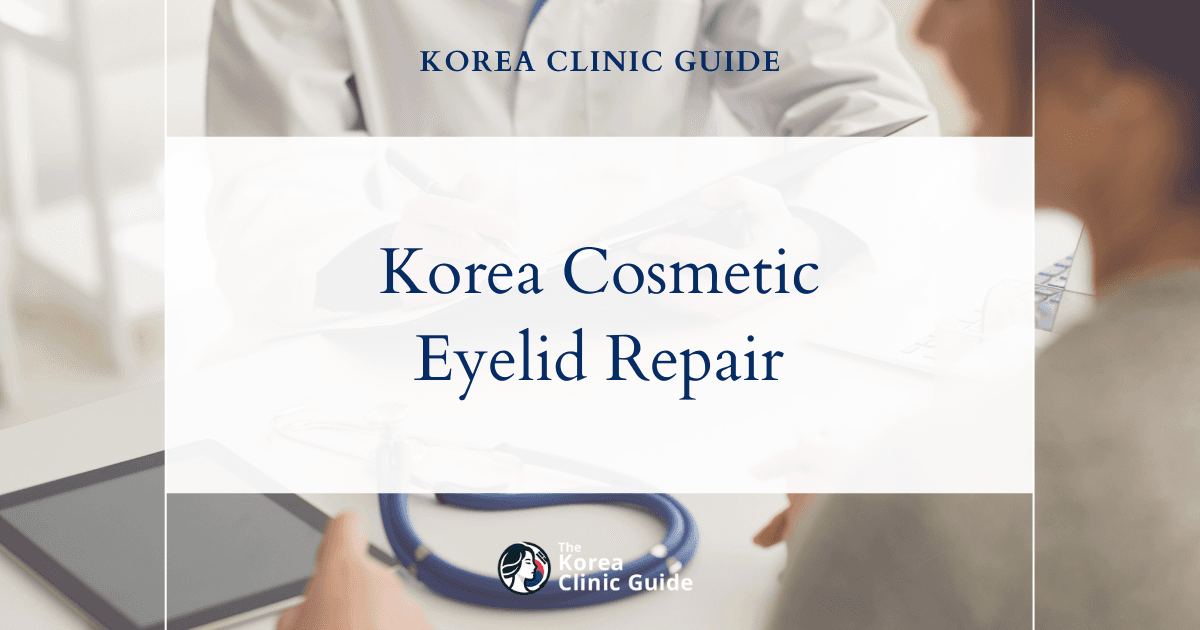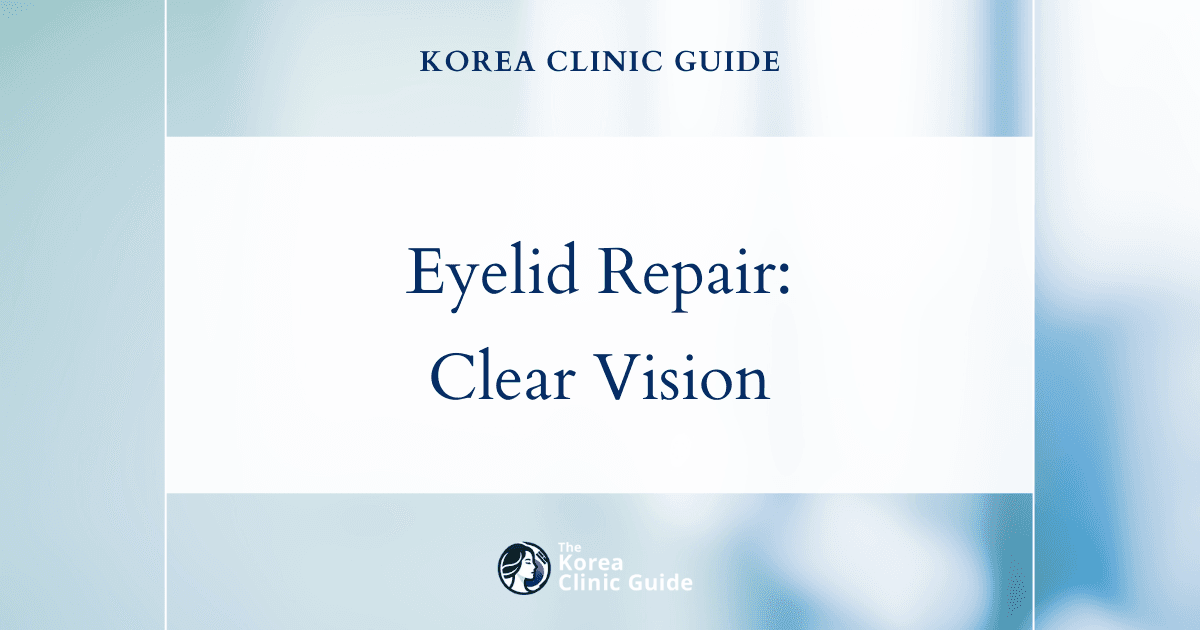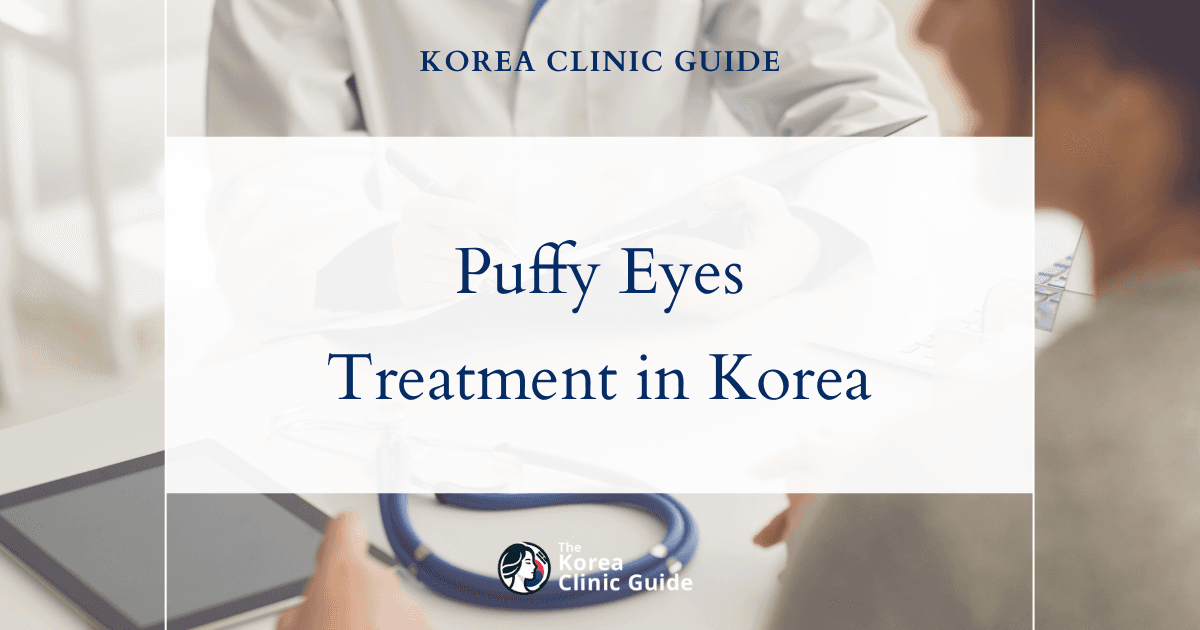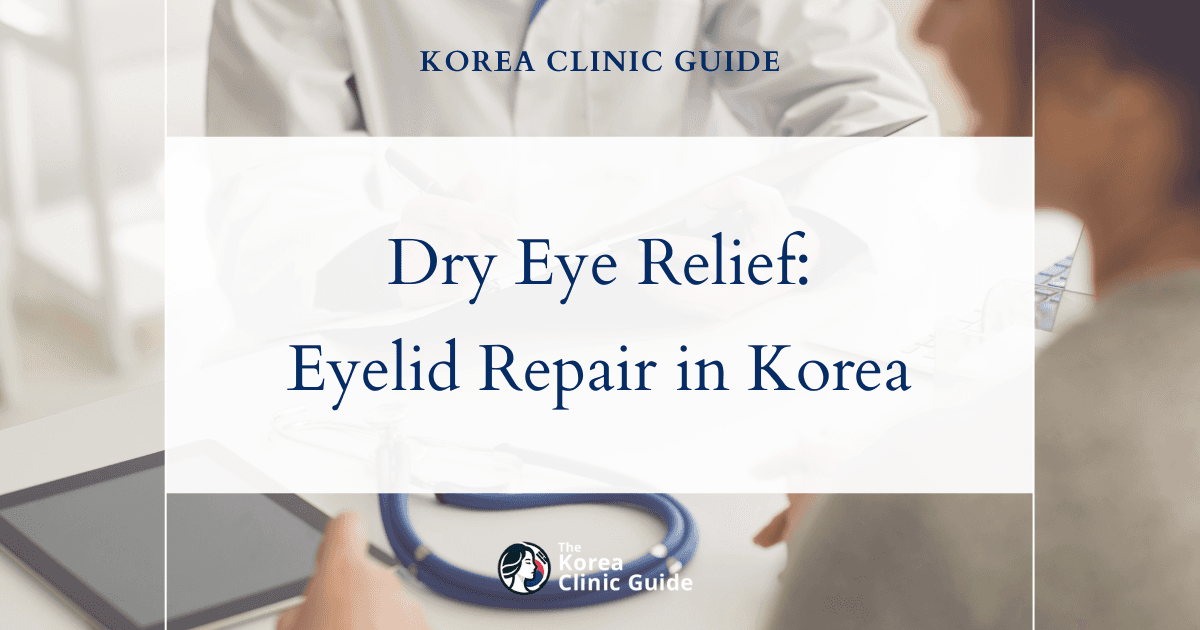Medical Tourism Blog
Bell's Palsy Treatment in Korea: Ptosis Correction Procedures for Effective Recovery
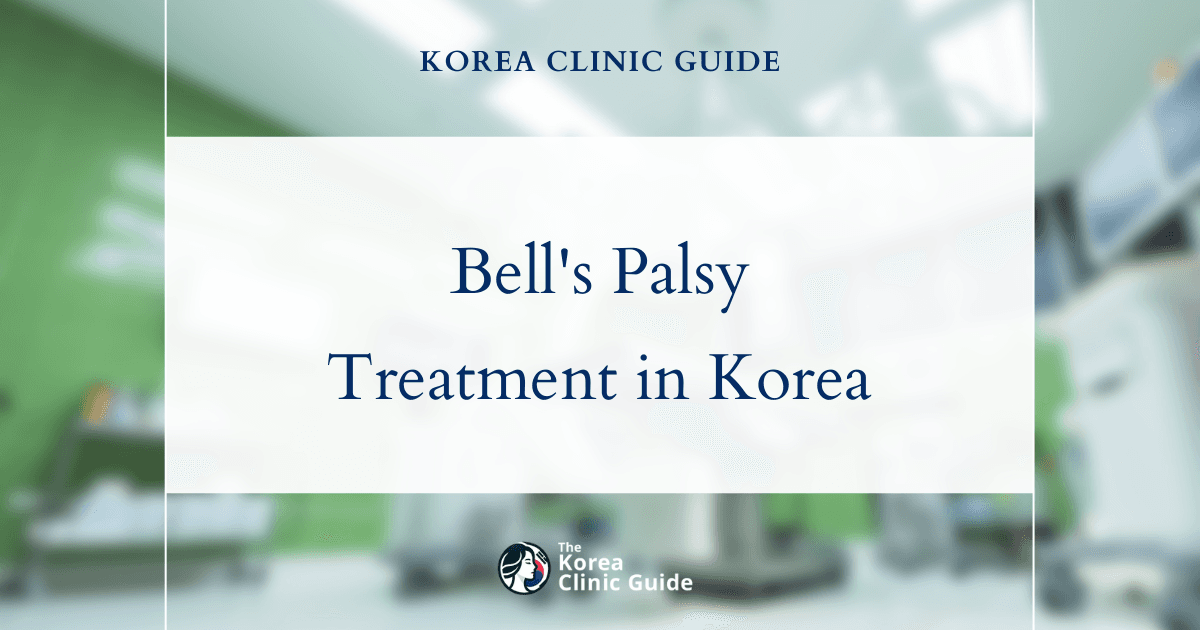
Table of contents
- Ptosis Correction: A Detailed Medical Overview
- Best Clinics in Korea for Bells Palsy
- Ptosis Correction in South Korea: A Comprehensive Guide for Patients
- Addressing Ptosis Related to Bell's Palsy
- Conclusion and Key Considerations for Patients
- References
Bell's palsy is a neurological condition that causes temporary facial paralysis and can sometimes result in a drooping eyelid, known as ptosis. If you're researching solutions online, this guide offers a clear overview of Bell's palsy, explains ptosis correction surgery, outlines how to get this procedure in South Korea, highlights the benefits of choosing South Korea, and shares patient experiences with this treatment.
Bell's palsy causes sudden weakness or paralysis on one side of the face due to damage to the facial nerve (the seventh cranial nerve). Symptoms usually appear quickly and may worsen over about 48 hours. You might notice a droop on one side of your face, difficulty closing the eye on that side, or an uneven smile. Other symptoms can include jaw or ear pain, increased sensitivity to sound, headaches, loss of taste, and changes in tear and saliva production.
The exact cause of Bell's palsy is often unknown (idiopathic), but it’s strongly linked to viral infections. Viruses like herpes simplex (which causes cold sores) and herpes zoster (which causes shingles) can inflame the facial nerve as it passes through a narrow bone canal. Factors increasing your risk include pregnancy (especially in the third trimester or just after birth), upper respiratory infections like colds or flu, diabetes, high blood pressure, and obesity. The good news is that most people recover well, with significant improvement in weeks and full recovery within three to six months, though it can sometimes take up to a year. Younger patients tend to recover more fully.
Common Pseudonyms and Alternative Names for Bell's Palsy
Bell's palsy is also called facial palsy, idiopathic peripheral facial palsy, cranial mononeuropathy - Bell palsy, or simply Bell palsy. In some cultures, it’s known as facial hemiplegia, Abu Al-Wajih, or Abu Wajeh, and sometimes referred to as the Seventh Nerve issue. The condition is named after Sir Charles Bell, the neurologist who first described it. While "facial paralysis" is a broader term for facial weakness from various causes, Bell's palsy specifically refers to facial paralysis with an unknown cause.
Diagnosis and Management of Bell's Palsy
Doctors diagnose Bell's palsy by examining your facial muscles for weakness on one side, asking you to perform facial movements. There’s no specific test for Bell's palsy, but tests like electromyography (EMG) can check nerve involvement, blood tests can rule out conditions like Lyme disease or diabetes, and imaging (MRI or CT scans) can exclude other causes.
Treatment usually involves oral corticosteroids like prednisone to reduce nerve inflammation, ideally started within 72 hours of symptom onset. Sometimes antivirals such as acyclovir or valacyclovir are added if a viral cause is suspected. Protecting the affected eye is crucial, especially if the eyelid doesn’t close fully—using lubricating eye drops during the day, ointment at night, and sometimes an eye patch helps prevent corneal damage. Physical therapy, facial exercises, massage, and alternative treatments like acupuncture may support recovery. Since Bell's palsy symptoms can mimic a stroke, immediate medical attention is essential to rule out stroke, which requires different treatment.
Potential Long-Term Effects and Complications
Most people recover fully, but some may experience lasting effects. Rarely, permanent facial nerve damage occurs. Synkinesis, where regenerating nerves miswire causing involuntary muscle movements (like the eye closing when smiling), can happen and may be treated with Botox. If the eyelid can’t close fully, chronic dryness and corneal damage may lead to vision problems. Some patients have persistent facial asymmetry, and Bell's palsy can recur in a small number of cases.
Ptosis Correction: A Detailed Medical Overview

Ptosis, or blepharoptosis, is the drooping of the upper eyelid. It can range from a slight sag to covering the pupil and blocking vision. People with ptosis often look tired or sleepy.
Causes of Ptosis
Ptosis can be congenital (present at birth) or acquired later in life. The most common acquired cause is aging, which weakens or stretches the levator muscle aponeurosis—the tendon that lifts the eyelid (involutional ptosis). Other causes include nerve damage from Bell's palsy, stroke, or third cranial nerve palsy (neurogenic ptosis); muscle disorders like myasthenia gravis or muscular dystrophy (myogenic ptosis); trauma; long-term contact lens use; complications from eye surgeries like cataract or LASIK; and rarely, tumors causing mechanical ptosis.
Medical Procedures for Ptosis Correction
Ptosis surgery aims to raise the upper eyelid to improve vision and appearance. The technique depends on the cause, severity, and levator muscle strength.
-
External Approach (Levator Advancement/Resection): For patients with good levator function, a small incision is made in the eyelid crease to shorten or advance the levator muscle, lifting the eyelid.
-
Internal Approach (Müller's Muscle-Conjunctival Resection - MMCR, Levator Resection): Suitable for mild to moderate ptosis with good response to phenylephrine eye drops. This is done from the eyelid’s underside without external incisions, removing part of Müller's muscle and conjunctiva.
-
Frontalis Sling Fixation: For severe ptosis with poor levator function, the eyelid is connected to the forehead’s frontalis muscle using a sling (silicone rod or fascia), allowing the forehead to lift the eyelid.
Other less common techniques include the Whitnall sling, tarsoaponeurectomy, and tarsomullerectomy (Fasanella-Servat procedure). Surgery is often done under local anesthesia with sedation, allowing adjustments during the procedure for optimal eyelid position.
Recovery Process After Ptosis Correction Surgery
Healing takes weeks to months for swelling to subside and eyelid position to stabilize. Early on, expect swelling, bruising, and mild discomfort, managed with cold compresses, head elevation, and pain medication. Eye drops and ointments protect the eye, especially if eyelid closure is temporarily impaired. Non-dissolvable stitches are usually removed within 5–10 days. Avoid strenuous activity, heavy lifting, rubbing eyes, makeup, and contact lenses for a few weeks. Temporary blurry vision or light sensitivity may occur. Final eyelid symmetry may take weeks to months to appear.
Potential Risks and Complications Associated with Ptosis Correction
Risks include bleeding, infection, poor wound healing, and eyelid asymmetry (over- or undercorrection), which may require revision surgery. Dry eye and irritation are common due to increased eye exposure. Lagophthalmos (incomplete eyelid closure) can raise corneal damage risk, especially in Bell's palsy patients. Rare complications include corneal damage, ptosis recurrence, suture granulomas, and extremely rarely, vision loss.
Best Clinics in Korea for Bells Palsy
Listed below are the best clinics in Korea for bells palsy:
| Clinic Name | Key Features | Special Techniques |
|---|---|---|
| THEPLUS Plastic Surgery | World-renowned board-certified plastic surgeons, comprehensive facial restoration approach, personalized patient-centered care, four-story Gangnam facility, leaders in global medical research and education, unwavering commitment to patient safety and harmonious results | 3D implant technology, facial reanimation, facial contouring, rhinoplasty, functional and aesthetic restoration for Bell’s Palsy |
| Made Young Plastic Surgery | Led by Dr. Park Byung-Chan with 15+ years eye surgery experience, highly experienced medical team (15+ years average), direct consultation, full-time board-certified anesthesiologists, robust safety and monitoring systems, transparent CCTV, aftercare and follow-up center, multiple national awards, Gangnam location, expertise in facial symmetry and anti-aging | Customized eye surgery for Bell’s Palsy, fine incision work, eyelid height and thickness adjustments, systematic safety protocols, comprehensive aftercare programs |
| Okay Plastic Surgery Clinic | Individualized, patient-focused care, multidisciplinary team with expertise in facial and eye surgery, empathetic and supportive treatment environment, customized rehabilitation and follow-up care, renowned for consistent natural results, trusted by local and international patients | Advanced eye and face surgery for asymmetry and eyelid restoration, minimally invasive and innovative surgical techniques, comprehensive functional and aesthetic facial rehabilitation, broad range of facial and eye procedures |
THEPLUS Plastic Surgery
THE PLUS Plastic Surgery stands out as Korea’s top clinic for Bell’s Palsy treatment owing to its world-renowned team of board-certified plastic surgeons and a comprehensive approach to facial restoration. Spearheaded by Dr. Kim Taek Kyun, a global expert recognized for his groundbreaking research in 3D implants and mastery in facial contouring and rhinoplasty, the clinic ensures every procedure is grounded in both artistry and science. Dr. Jeong Jae Yong, President of the Korean Society of Plastic Surgeons, complements this expertise with his pioneering work in combining function and aesthetics—an approach especially vital for Bell’s Palsy cases, where restoring natural balance and facial symmetry is paramount. Dr. Lee brings decades of surgical experience and a meticulous focus on patient satisfaction from her roles at Korea’s leading university hospitals. The clinic’s four-story facility in the heart of Gangnam is dedicated to delivering seamless, personalized care from consultation through surgery to post-operative skincare. Not only do the surgeons at THE PLUS continually contribute to global medical research and educate peers internationally, but their unwavering commitment to patient safety, academic excellence, and harmonious results ensures the best possible outcomes for Bell’s Palsy clients. For those seeking both technical precision and natural beauty in facial reanimation, THE PLUS Plastic Surgery marries a legacy of innovation with a holistic, patient-centered ethos that makes it the premier choice in Korea.
You can check out their website here: THEPLUS Plastic Surgery Website
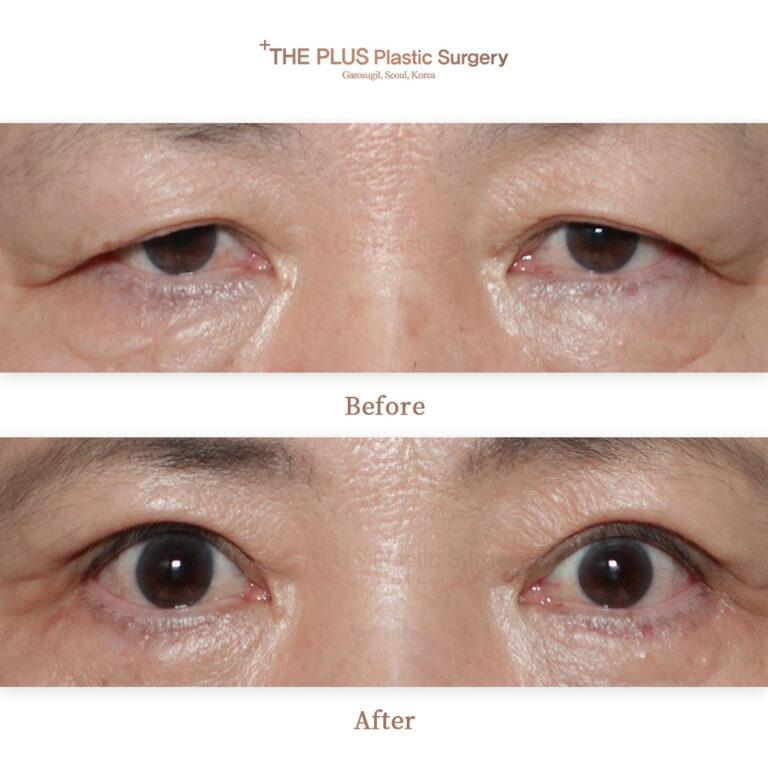
Made Young Plastic Surgery
When it comes to the treatment and correction of Bell’s Palsy in Korea, Made Young Plastic Surgery stands out as the premier clinic, thanks to its unrivaled expertise and patient-centered approach. Led by Dr. Park Byung-Chan—renowned for more than 15 years of exclusive experience in eye surgery—patients benefit from a meticulous, customized strategy that considers every detail, from incision lines to eyelid height and thickness, ensuring results that are both natural and beautiful, even immediately after surgery. The clinic’s medical team boasts an average of over 15 years’ experience, offering direct consultation and diagnosis, while a comprehensive safety system features full-time board-certified anesthesiologists, individual patient monitoring, a robust cross-check emergency protocol, and full transparency via CCTV. Made Young further distinguishes itself with a dedicated aftercare center and a systematic follow-up program, earning top honors such as the 2022 Korea No.1 Award and the Korea Customer Satisfaction 1st Place distinction. Nestled in Gangnam, the clinic specializes in elite facial and anti-aging procedures, blending advanced innovations with deep aesthetic mastery, all underpinned by an unwavering dedication to patient safety, satisfaction, and natural beauty—making it the definitive destination for those seeking Bell’s Palsy treatment and facial symmetry restoration in Korea.
You can check out their website here: Made Young Plastic Surgery Website

Okay Plastic Surgery Clinic
Okay Plastic Surgery Clinic stands out as a leading destination in Korea for patients seeking Bell’s Palsy treatments and comprehensive facial rehabilitation. The clinic’s philosophy centers on individualized, patient-focused care, ensuring that those affected by Bell’s Palsy receive therapies and surgical options custom-tailored to their unique facial structure and functional needs. Guided by a team of specialized professionals, including a renowned female plastic surgeon with substantial experience in facial and eye surgery, Okay Plastic Surgery combines medical expertise with empathetic, transformative care. The clinic is committed to helping each patient achieve both natural aesthetic results and optimal functional recovery using the latest advancements in plastic and reconstructive surgery.
Key reasons why Okay Plastic Surgery Clinic is the best choice for Bell’s Palsy patients:
- Customized Eye and Face Surgery: Advanced surgical options specially tailored for individual Bell’s Palsy symptoms, including asymmetry correction, eyelid function restoration, and facial balance enhancement.
- Integrated Care Team: Multidisciplinary expertise led by experienced plastic surgeons who understand both medical and aesthetic aspects of facial nerve recovery.
- Cutting-Edge Techniques: Utilization of precise, minimally invasive, and innovative surgical techniques for faster healing, minimal scarring, and natural-looking results.
- Comprehensive Care Beyond Surgery: Supportive pre- and post-procedure care including detailed consultations, ongoing follow-up, and tailored rehabilitation plans.
- Empathetic, Patient-Centered Approach: The clinic is renowned for its sincere and supportive treatment environment that places patient comfort and confidence at the forefront.
- Extensive Range of Facial and Eye Procedures: From eyelid repair to full facial rejuvenation, Okay Plastic Surgery offers a broad spectrum of treatments to address every aspect of Bell’s Palsy recovery—both functional and aesthetic.
- Proven Results and Trusted Reputation: Okay Plastic Surgery is well-regarded for its consistent outcomes, patient satisfaction, and its role as a top choice for both local and international patients seeking facial reconstruction and rehabilitation.
Okay Plastic Surgery Clinic is uniquely positioned in Korea to provide Bell’s Palsy patients with holistic, specialized care, supporting their journey back to confidence and facial harmony.
You can check out their website here: Okay Plastic Surgery Clinic Website

Ptosis Correction in South Korea: A Comprehensive Guide for Patients
South Korea is a leading destination for medical tourism, especially for cosmetic and elective surgeries like ptosis correction. This is thanks to its advanced healthcare system, cutting-edge technology, and highly skilled surgeons specializing in oculoplastic surgery. Many surgeons in Seoul have extensive experience and training in advanced eyelid procedures.
Cost is another major advantage—ptosis surgery in South Korea is often about 30% cheaper than in the US, UK, or Australia, while maintaining high standards of care. South Korea is known for high patient satisfaction and natural-looking results that blend well with facial features. Clinics often provide services tailored to international patients, including online consultations, travel and accommodation help, and multilingual staff.
Step-by-Step Process for International Patients Seeking Ptosis Correction in South Korea
-
Research and Select a Clinic: Review websites, before-and-after photos, surgeon credentials, and patient reviews. Check for experience with international patients and support services.
-
Online Consultation: Many clinics offer initial remote consultations to discuss your condition and treatment options.
-
In-Person Consultation: Upon arrival, the surgeon will examine your eyes, assess levator muscle function, and discuss surgical options, risks, and expected outcomes.
-
Pre-Operative Planning: The surgeon creates a personalized plan and provides instructions on medication avoidance and lifestyle changes.
-
Surgery: Typically lasts 1–2 hours under local anesthesia with sedation.
-
Post-Operative Care: Instructions on managing swelling, using eye drops, and follow-up visits for stitch removal and healing monitoring.
Seoul districts like Gangnam and Apgujeong offer convenient accommodations near clinics. Many clinics provide concierge services for airport pickup, lodging, and transportation. Medical visas (short-term C-3-3 or long-term G-1-10) are usually required, with documents including passport, visa form, photos, medical reports, treatment confirmation, and proof of funds. Check with your local Korean embassy for details. Some countries’ citizens may use Korea Electronic Travel Authorization (K-ETA) for short stays.
Benefits of Choosing South Korea for Ptosis Correction Over Other Countries
South Korea offers:
-
Highly experienced, board-certified oculoplastic surgeons with advanced training.
-
State-of-the-art medical facilities meeting international safety standards.
-
Cost-effective surgery often including comprehensive care packages.
-
High patient satisfaction and natural, subtle aesthetic results.
-
Extensive support services for international patients, easing travel and recovery.
Cost Comparison of Ptosis Correction Surgery: South Korea vs. Other Countries
| Country | Average Cost (USD) |
|---|---|
| South Korea | $1,000 - $3,100 |
| USA | $3,000 - $5,000 |
| UK | $3,100+ |
| Australia | $3,800+ |
| Europe | $2,500 - $4,500 |
| Thailand | $1,500 - $2,500 |
| Turkey | $1,400 - $2,500 |
| Mexico | $3,420 |
| Poland | ~$950 |
| India | ~$740 |
Note: Costs vary by clinic, surgeon expertise, and procedure complexity.
Addressing Ptosis Related to Bell's Palsy
Bell's palsy can cause ptosis on the affected side due to facial nerve involvement in eyelid muscle control.
Specific Considerations and Challenges in Ptosis Correction for Bell's Palsy Patients
A key concern is lagophthalmos—impaired eyelid closure—which ptosis surgery might worsen by lifting the eyelid higher. This can cause eye dryness, irritation, and corneal damage. Surgeons carefully assess eyelid closure ability and corneal health using tools like slit lamp microscopes before surgery.
Eyelid synkinesis, involuntary eyelid movement during other facial expressions, may also complicate surgery. In such cases, Botox may be preferred over surgery.
Tailoring Ptosis Correction Techniques for Individuals with Facial Paralysis
A conservative approach is often best, aiming to improve eyelid position without compromising closure. For severe closure issues, surgeons may implant a small gold or platinum weight in the eyelid to help it close by gravity. Brow lifts can also address brow drooping that contributes to eyelid sagging.
Importance of Assessing Eyelid Closure and Bell's Phenomenon
Before surgery, evaluating eyelid closure and Bell's phenomenon—the reflex upward and outward eye movement when closing the eyelid—is critical. Poor Bell's phenomenon increases corneal exposure risk after surgery, so this assessment guides surgical decisions.
Potential for Combining Ptosis Correction with Other Facial Reanimation Procedures
Sometimes ptosis correction is part of a broader facial reanimation plan to restore symmetry and function. This may include brow lifts, lower eyelid repair, nasal airway correction, mouth corner reanimation, and lower lip adjustments. These decisions are personalized by experienced surgeons.
Patient Testimonials and Case Studies: Experiences of Individuals Undergoing Ptosis Correction for Bell's Palsy
Patient stories and case studies show positive outcomes from surgeries like levator aponeurosis advancement combined with orbicularis oculi muscle resection for ptosis and related conditions after Bell's palsy. These highlight the importance of choosing surgeons skilled in both oculoplastic surgery and facial paralysis complexities.
Conclusion and Key Considerations for Patients
Bell's palsy can sometimes cause ptosis that persists beyond facial paralysis. For those considering ptosis correction, especially in South Korea, understanding both conditions and surgical options is vital. South Korea offers expert surgeons, advanced facilities, and cost-effective care. Patients with Bell's palsy should seek surgeons experienced in managing ptosis with facial paralysis, ensuring thorough evaluation of eyelid closure and Bell's phenomenon to protect eye health. Combining ptosis correction with other facial reanimation procedures may provide the best functional and aesthetic results. Clear communication with your surgeon about expectations and risks is essential for success.
References
1, 2, 3, 4, 5, 6, 7, 8, 9, 10, 11, 12, 13, 14, 15, 16, 17, 18, 19, 20, 21, 22, 23, 24, 25, 26, 27, 28, 29, 30
